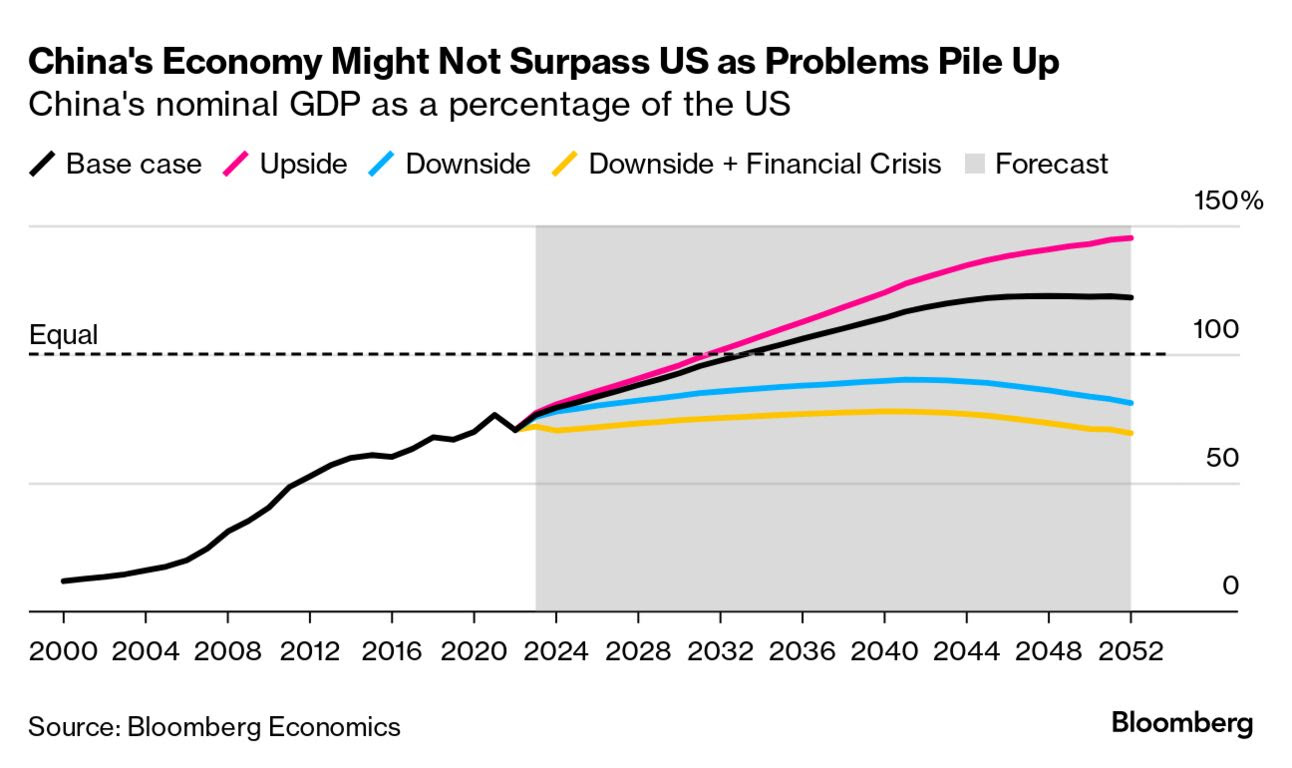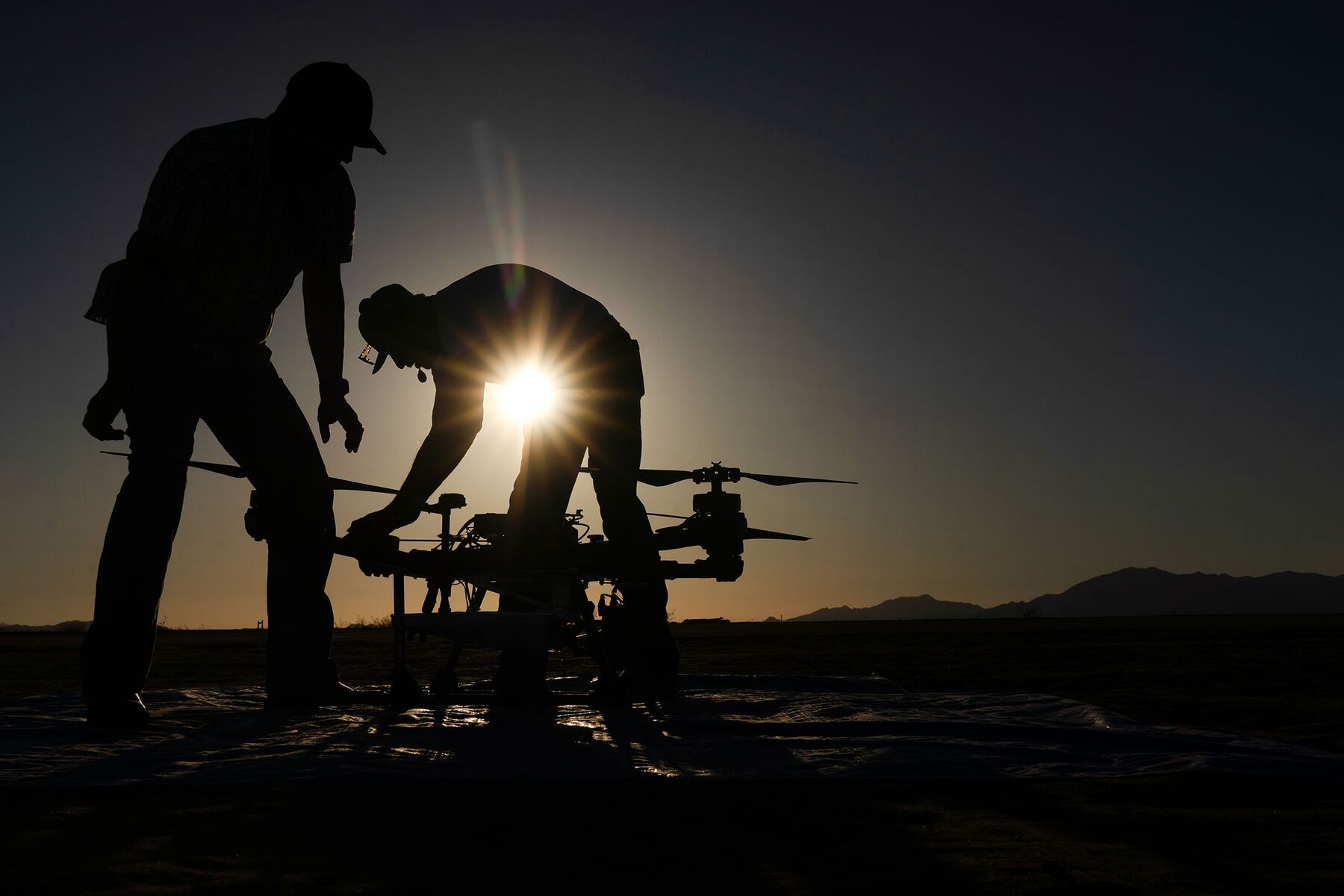| |||
| |||
For the past three years, Terry Aberhart has watched the spindly, fixed-wing drones zip across the big skies over his farm in Canada’s Saskatchewan province, testing a technology that could be the future of weeding.
Fitted with an artificial intelligence system, the drones are designed by local startup Precision AI to spot, identify and kill the weeds without drenching the entire crop in chemicals.
“I’m on the list for one of the first machines when they become available,” says Aberhart, a sustainable farming enthusiast. “The current technology is designed for maximum coverage and to hit everything in the field.”
For decades, big-acre crops like corn and wheat have been treated by spraying tractors that would move across vast farmlands, unleashing waterfalls of herbicide from long arms stretched above the crops, all to zap weeds that are often tiny and scattered about.
Apart from the environmental toll, that conventional spray-it-all approach also results in colossal financial waste. Aberhart spent nearly C$1 million ($745,000) on herbicides in 2022 alone to protect the wheat, canola and pulses growing on a slice of prairie larger than Manhattan. “Even if we could save 50% on average, it’s a huge saving,” he says.
The problem of combating weeds in a sustainable way is more urgent today than ever. Scientists say global warming supercharges the growth of certain weeds that compete for nutrients with crops, threatening food security. But every drop of herbicide farmers spray comes with an environmental cost, polluting soil, contaminating drinking water and contributing to a catastrophic loss of biodiversity.
A 2020 study found prolonged exposure to weed killers — including those approved by regulators — poses a threat to water fleas, a species vital to the aquatic ecosystem. And pressure is mounting on global food producers to rethink intensive farming practices; leaders from 195 nations signed a landmark United Nations-backed agreement last year, pledging to protect and restore at least 30% of the Earth’s land and water by 2030.
Precision AI is among a handful of companies turning to advanced technology to address the problem of chemical overuse in agriculture. Founded in 2017 by serial tech entrepreneur Daniel McCann, the company uses images of 15,000 plant species to train computer algorithms to distinguish staple crops (think corn, wheat and soybeans) from unwanted weeds. The drone’s camera can “see” anything bigger than half a sesame seed and its AI identifies weeds with 96% accuracy, spraying the intended target alone.
Precision AI says its approach can reduce herbicide use by as much as 90% compared to traditional methods. The startup was one of a dozen winners of BloombergNEF’s 2023 Pioneers award, which aims to spotlight early-stage climate tech innovators with game-changing potential.
Read More on BNEF Pioneers:
• 12 Climate Tech Pioneers Building a Net Zero World
• How to Sell a Power Generator No One Has Heard Of
• The Microbe That Wants to Replace Your Steak
• How the World Is Spending $1.1 Trillion on Climate Technology
• Seven Nuclear Fusion Startups Making Clean Energy History
Precision’s drones are capable of carrying five US gallons of liquid (nearly 20 liters) per flight and covering roughly 80 acres (0.3 square km) an hour. As the drone flies 4 to 6 feet (1.2 to 1.8 meters) above ground, its AI system makes real-time decisions and applies herbicides only where needed.
“We can’t continue to do things the way we’ve always done them,” McCann says. “We have to grow food smarter.”
Leveraging robotics and computer technology to assist in agricultural production isn’t a new concept; researchers at the University of Florida explored the possibility of a robotic orange picker as early as the 1980s. But recent technological advancements in AI, combined with worsening labor shortages and growing consumer demand for ethically and ecologically-produced food, have accelerated innovation.
“There are a lot of new developments and efforts towards using automated robotic solutions in agriculture,” says Manoj Karkee, a professor specializing in agricultural engineering at Washington State University. “We’re closer than ever to starting utilizing these technologies.”
Precision farming — an umbrella term that covers everything from AI-enabled weeding machines to smart sensor-controlled irrigation systems — is expected to grow from an $8.5 billion business last year to $15.6 billion by 2030, according to consultancy Markets and Markets. To get a slice of that action, Israeli startup Greeneye Technology helps upgrade mainstream sprayers to smarter ones that can identify and target individual weeds. Bosch BASF Smart Farming, a joint venture between two of Europe’s largest conglomerates, has come up with a similar solution.
Precision AI is focused on weed control from the sky with an additional benefit in mind. Unlike conventional spraying tractors and high-tech ground robots that trample anything in their way and compact the soil, drones minimize collateral damage.

That, in turn, could allow farmers to produce more on the same land — good news for a world where at least 50% more food is needed by 2050 to sustain a growing population, according to a 2019 study.
For now, Precision AI’s drone is operated with supervision from a human pilot. But McCann says his company is poised to introduce a fully autonomous spraying drone that can take off, fly and land by itself – as long as regulators grant permission.
The startup plans to commercialize its on-demand spraying service next year, allowing farmers to book as needed — not dissimilar to how consumers order an Uber. It will also sell the spraying drone to farmers who want more control over their crop management and charge a fee for its AI operating software on a pay-as-you-go basis.
That business potential has attracted investors including At One Ventures and BDC Capital, who’ve poured more than $20 million in venture funding into the company. Precision AI is also among eight startups selected earlier this year by Moline, Illinois-based Deere & Company, one of the world’s biggest farm machinery makers by revenue, to team up on the exploration of future agricultural technology.
Not everyone is convinced that future farming will be ruled by flying robots, however. Mark Siemens, an associate professor at the University of Arizona, says agricultural drone makers still need to prove their technology, especially at scale.
There is also the issue of regulatory hurdles. Precision AI is first targeting North America, where big-acre farming is common. But Canada has yet to give its regulatory blessing to commercial drone-based weed control. In the US, where Precision AI plans to make its commercial debut next year, lawmakers have given the green light for agricultural spray drones used by licensed operators — but they have done so with a long checklist. “The legal framework is still pretty challenging,” says Karkee of Washington State University.
On top of that, agricultural drone makers including Precision AI may get a cold shoulder from those they mean to help.
Aberhart, the farmer in Saskatchewan, says it will require “a big shift in mindset and mentality” for the farming community to switch over from the blanket spraying practice that has dominated the industry for decades. The first converts will be taking a big risk. After all, if weed management fails, it can ruin a season.
But Aberhart reckons that the transition will be a question of when, rather than whether. “It costs a farmer money to spray. So why would we want to spend more money if we don’t have to?”
Visual media produced in partnership with Outrider Foundation.













